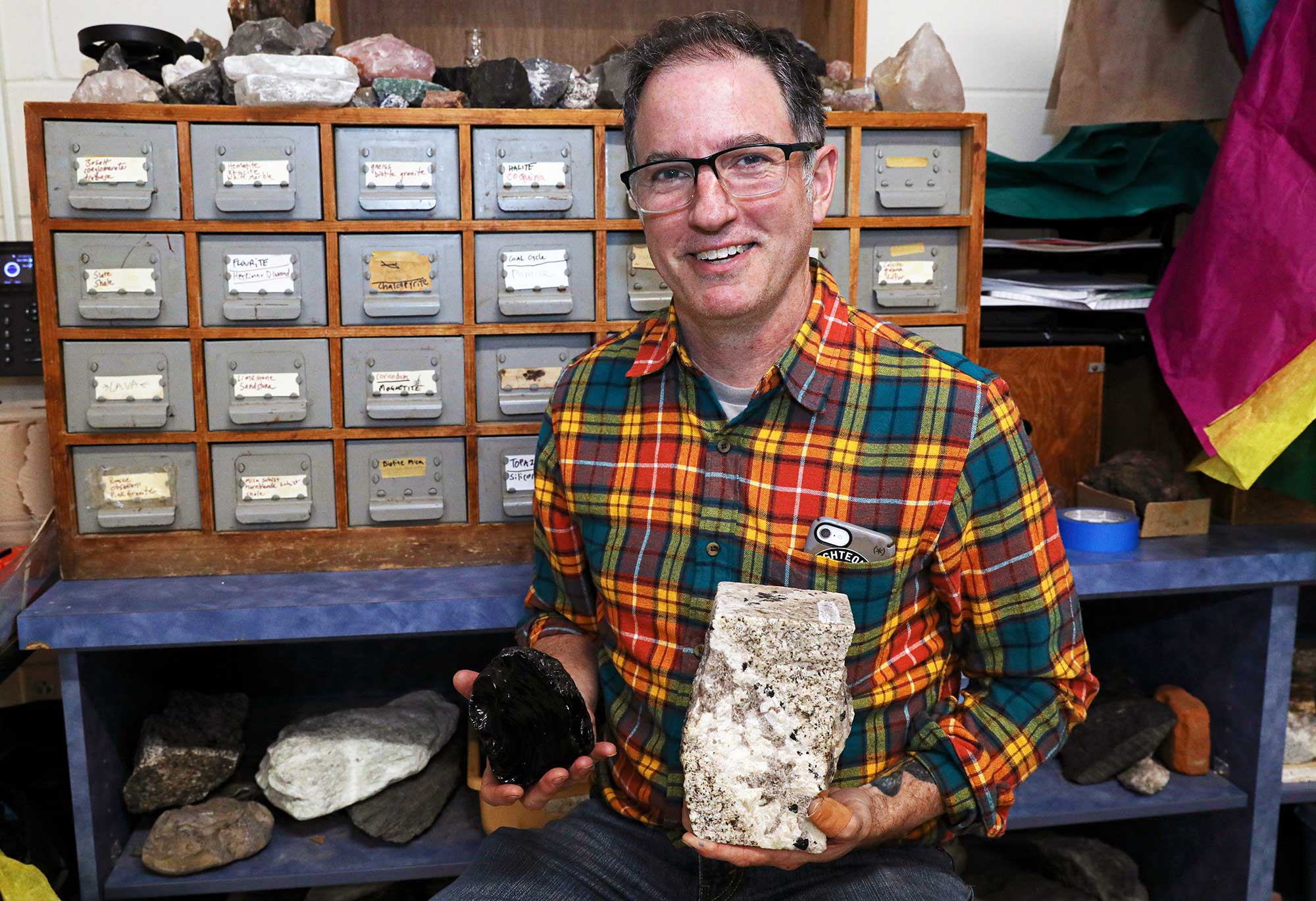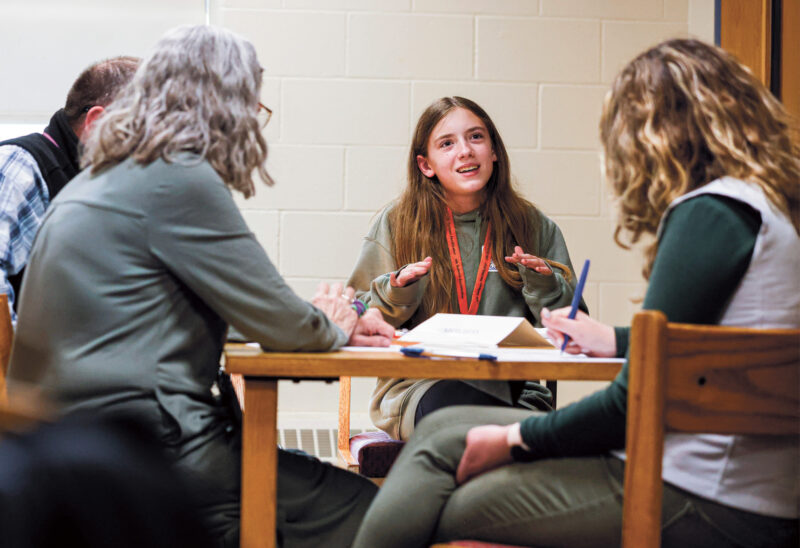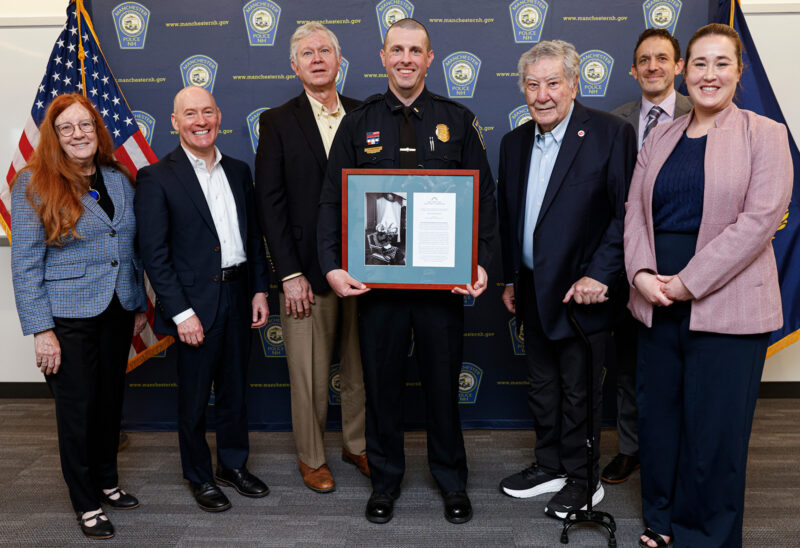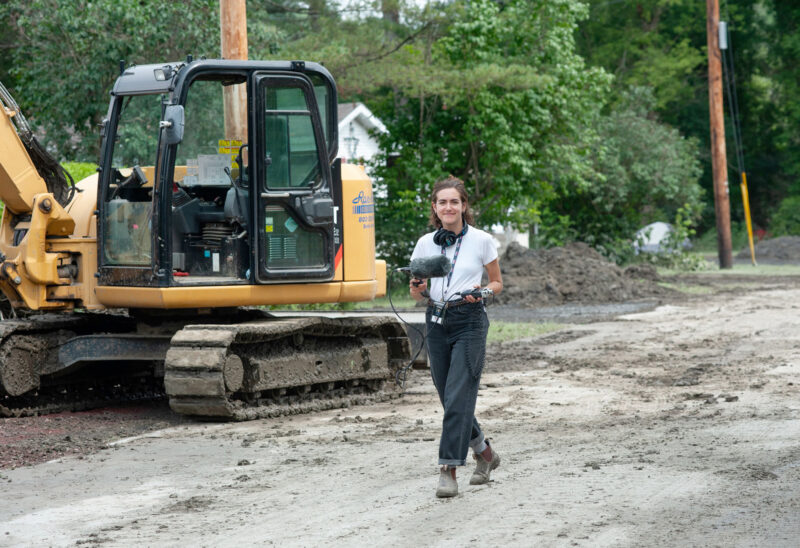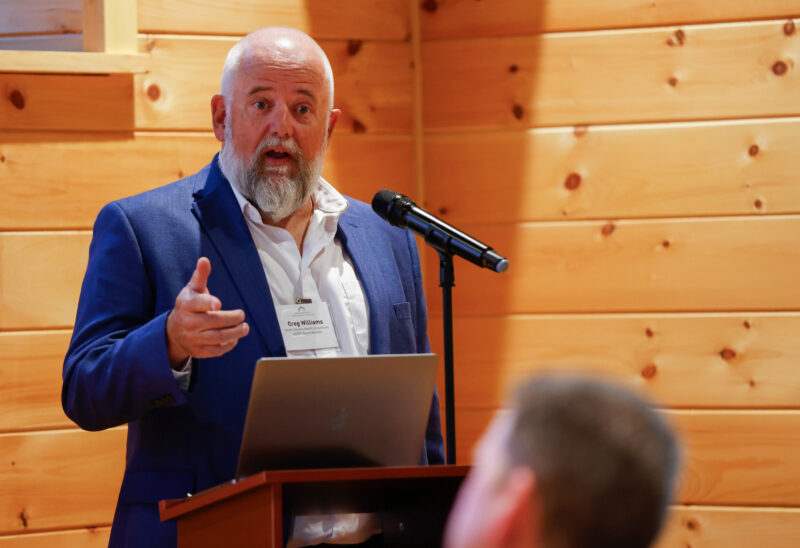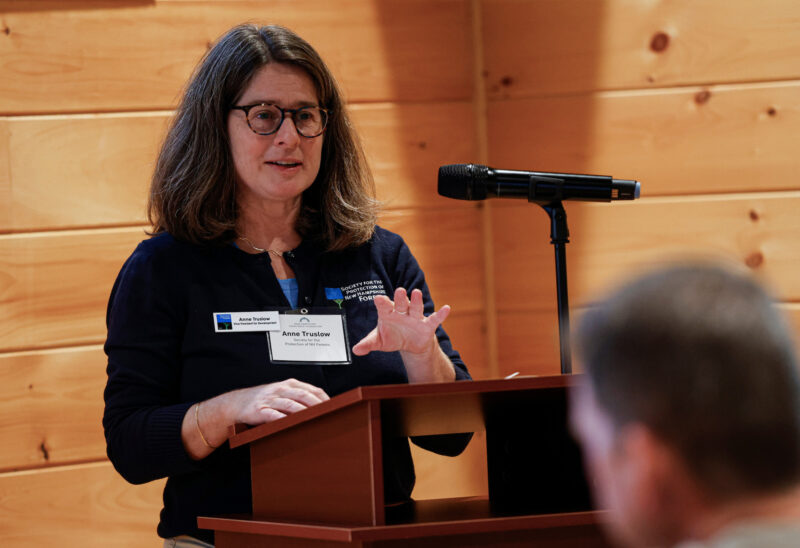Greg Stott loves rocks. They’re perched on just about every flat surface in his eighth-grade science classroom at Frances C. Richmond Middle School in Hanover — and throughout his house.
The rocks are not decorations. They are conversation starters, tools of Stott’s teaching trade: What are they made of? Where did they come from? How did they help shape our landscape? What can they teach us going forward?
As the 2023 recipient of the Christa McAuliffe Sabbatical from the New Hampshire Charitable Foundation, Stott hopes to prompt those questions and more in classrooms around the state. He plans to produce a documentary film about how the Ice Age affected the Connecticut River Valley and develop an Earth Science curriculum to help students from elementary to high school notice and better understand the geology of their own backyards.
The sabbatical, created in 1986 in honor of the Concord High School teacher and astronaut, gives an exemplary New Hampshire teacher a year off with pay and a materials budget to bring a great educational idea to fruition.
“What I want people to realize is that no matter where you are, there is something interesting that kids can look at, there is some interesting earth science everywhere,” Stott said.
At his school, for instance.
“Where I’m sitting right now was under water,” Stott said from his Upper Valley classroom.
He is not referring to street flooding after a heavy rain. He’s talking about Glacial Lake Hitchcock that was formed about 15,000 years ago and was up to 150 feet deep. As the glaciers melted in the last Ice Age, sediment and debris formed a dam in present-day Connecticut, creating a lake that stretched 200 miles northward through the Connecticut River Valley nearly to the current Canadian border.
Glacial lakes also covered the Merrimack Valley and parts of the North Country and Monadnock Region. Stott said the lakes and the movement of glaciers left clues throughout the state that are ripe for exploring — valleys, boulders, sand deposits, rich farmland, rivers — clues he plans to highlight in an easy-to-understand curriculum and website for all grades, complete with lesson plans, field trip ideas, maps and more.
He’s explored most of New Hampshire, including all 48 of its 4,000 peaks, but during his year out of the classroom he will scout new areas. That might include hiking to observe how ice sheets helped shape a mountain peak, noting roadside features, sampling soils, exploring streams and checking out rocks — always rocks.
“I want to get kids to be curious,” he said. “Why is this huge rock on top of the hill? There is nothing higher here. Did it roll here? Was it transported here by a glacier?”
Neighborhood streams also can be a treasure.
“Kids love to play in a creek,” Stott said. There, they can learn about water flow, where sediment comes from and where the stream drops it or how streams change through the year.
Stott comes well-prepared for the challenge. In addition to his passion for geology and learning by doing (not just by reading) he has participated in major geologic projects in Mt. Rainier National Park in Washington, developing curricula and lesson plans about a glacial river and volcano.
For ten years, his middle school classes worked with the Army Corps of Engineers Cold Regions Research and Engineering Laboratory (CRREL) across the street from the school in Hanover, collecting and analyzing climate data to understand their area.
Geology, Stott said, is not just for learning about the past. As climate and landscapes change, clues about past conditions and landscape offer insights into current conditions and what may be ahead.
Discovering, for instance, as a neighbor of Stott’s did, that layers of clay from the glacial lake floor were buried in a hillside explained why the land wouldn’t drain properly. Knowing characteristics of once-submerged land might prompt property owners to take precautions with similar areas in the future.
Stott feels fortunate to teach in a region rich in geologic history, and in a school district with ample teaching resources and valuable and willing partners such as Dartmouth College and the Cold Regions Lab. He hopes his work will provide new resources to spur curiosity in all schools, especially those with funding challenges.
“I want to help level the playing field and show teachers that wherever you are, there is something cool to investigate,” he said.
Information about the 2024 Christa McAuliffe Sabbatical will be available this October. Applications will be accepted beginning in January 2024.

